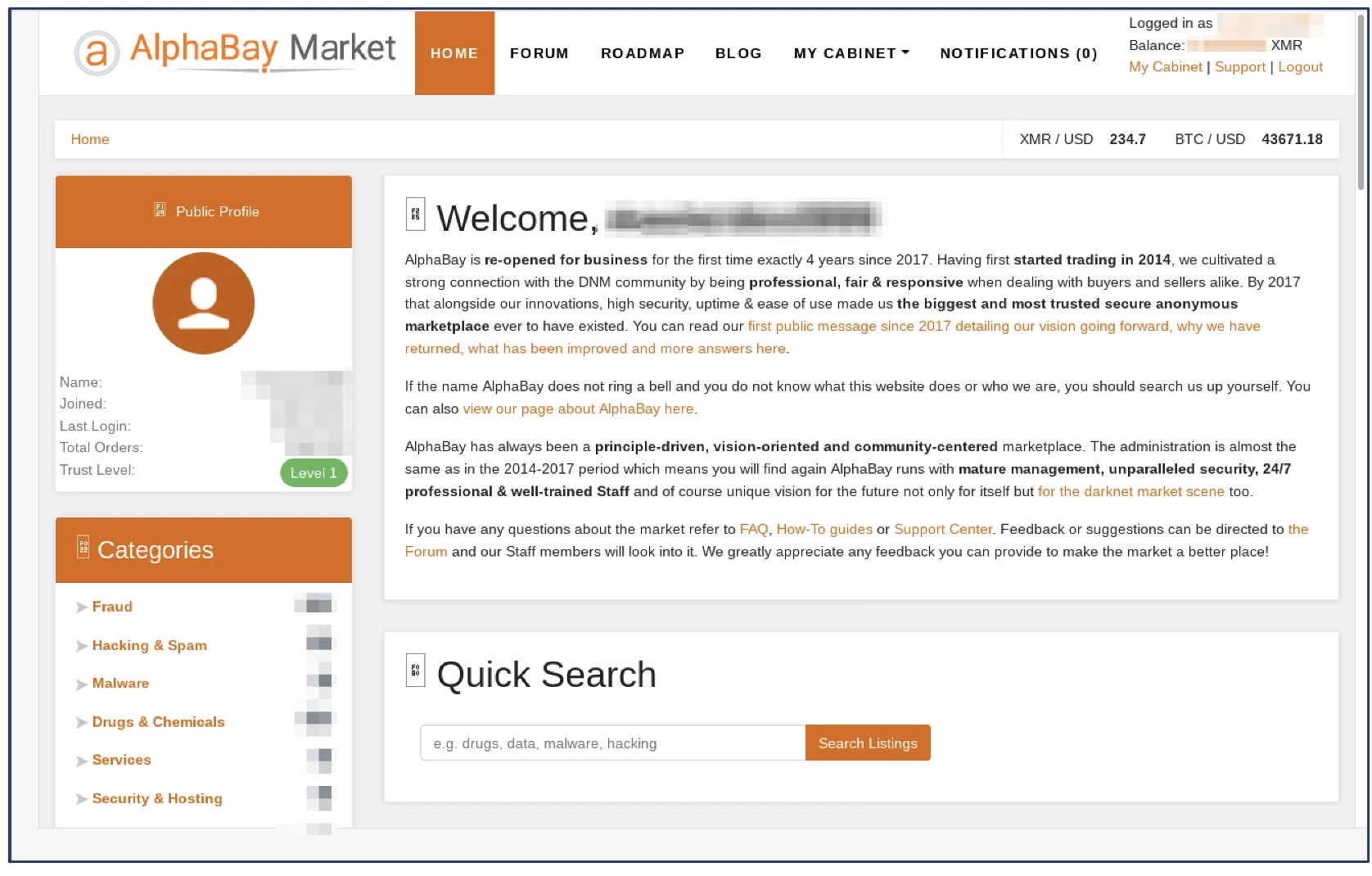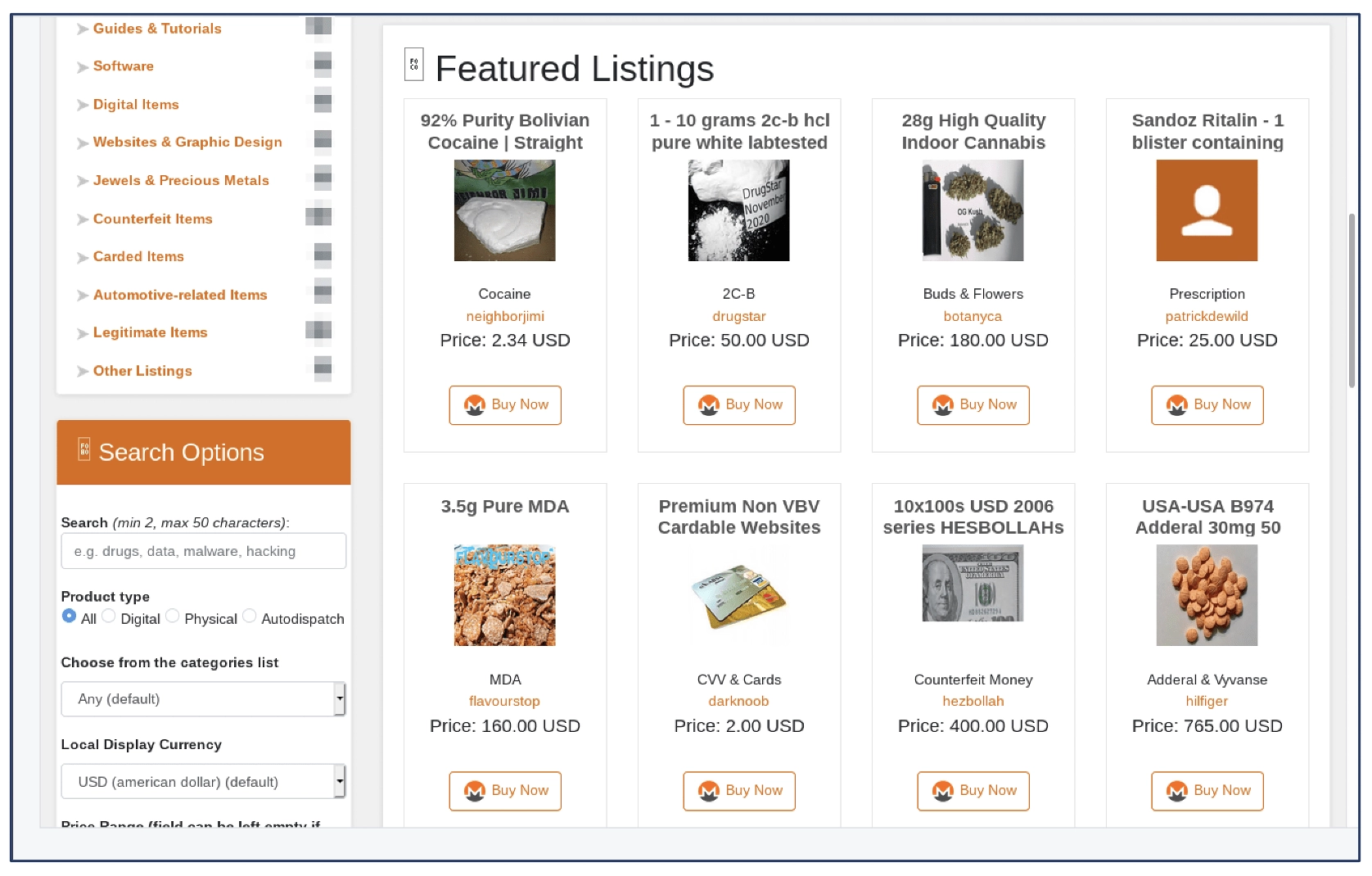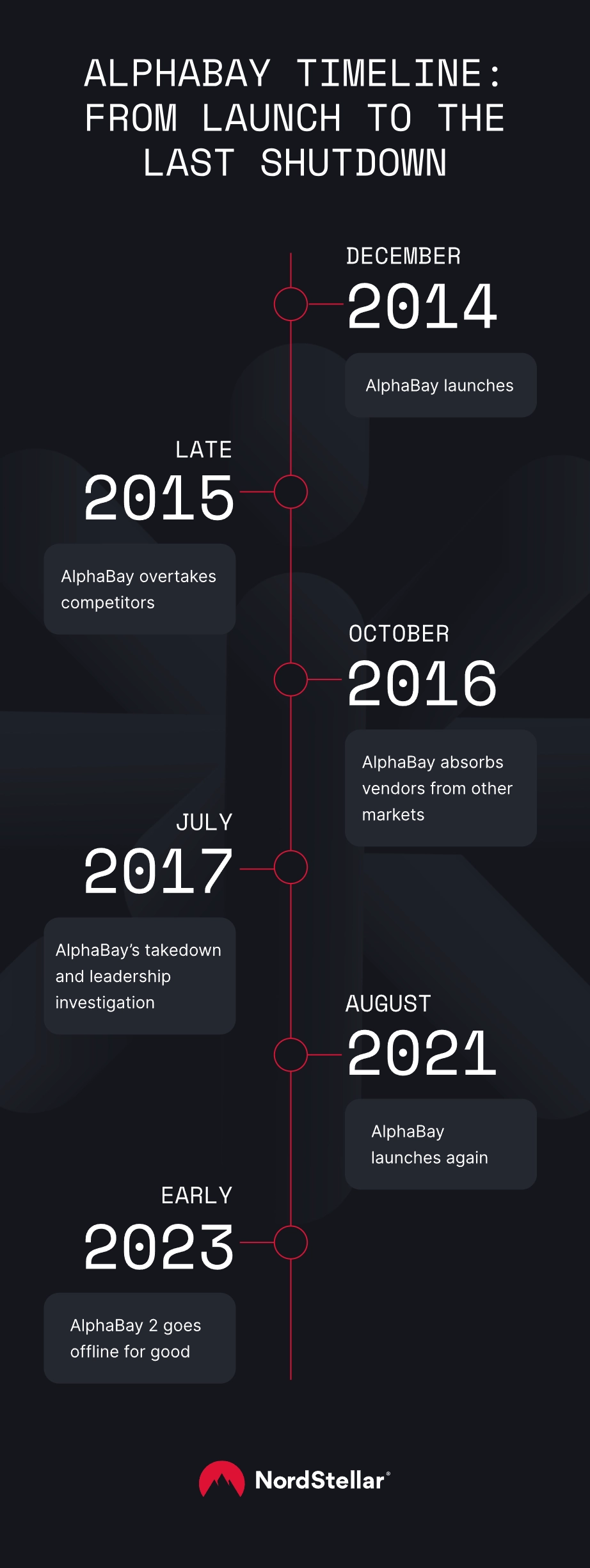
Irma Šlekytė
Dark web

AlphaBay was one of the most notorious darknet marketplaces, known for its vast range of illegal goods and services. From 2015 to 2017, it was the go-to platform for cybercriminals to buy and sell everything from drugs to hacking tools. But its shutdown in 2017 didn’t signal the end of dark web marketplaces. The world of online criminal markets is still thriving, and AlphaBay’s legacy continues to shape how these platforms operate today. Let’s take a look at AlphaBay’s rise, fall, and the lasting impact it had on the dark web.
AlphaBay was the largest criminal marketplace on the dark web from 2015 to 2017. It operated on the Tor network and allowed users to buy and sell illegal goods, counterfeit documents, computer hacking tools, and stolen data.
The site launched in 2014 and quickly attracted hundreds of thousands of users before law enforcement authorities shut it down in July 2017. Despite its shutdown, AlphaBay made a brief reappearance in 2021 before being permanently taken down in 2023.
Its interface mimicked a traditional e-commerce platform and featured product listings with descriptions, seller ratings, categories, and a shopping cart system. Users could search for items, compare prices, and read customer reviews. Transactions took place in cryptocurrencies like Bitcoin and Monero, which offered a layer of anonymity for both buyers and sellers.
AlphaBay stood out for its ease of use. The layout was clean and easy to navigate, with dropdown menus and filter options that helped users find what they wanted quickly. Unlike earlier dark web markets, it introduced escrow services and multi-signature wallets, which built user trust and made it harder to scam both buyers and sellers. It combined criminal commerce with a user experience that rivaled mainstream online stores in a largely unregulated space.


Source: DarkOwl
AlphaBay functioned as a darknet marketplace, accessible only via anonymous networks like Tor, so users could browse and buy products without revealing their identity. Accessing the platform through these networks meant that users’ IP address and browsing activity would be hidden from surveillance.
Once on the marketplace, users would register by creating a unique account. Registration was fairly simple and required a username, password, and email address. However, because of the platform’s focus on anonymity, the process did not involve traditional identity verification. This made it easier for anyone to join but also posed a risk of fraudulent activity.
AlphaBay was a hub for illegal activities, with listings that included a variety of illegal goods. Some of the most common items sold were:
To maintain anonymity, AlphaBay used Bitcoin and Monero as primary payment methods. Platform creators chose these cryptocurrencies for their ability to offer a level of privacy that traditional payment systems couldn't provide.
An important feature of AlphaBay was its escrow system. When buyers made a purchase, their funds were held in escrow by the platform until the product was delivered and verified. Sellers couldn’t just take the money and run — they had to fulfill the order for the transaction to be completed.
In addition to escrow, AlphaBay also implemented several other features to protect users:
AlphaBay had rather strict marketplace rules in place. If a seller didn’t fulfill orders or was caught violating these rules, they could be banned from the platform.
Overall, AlphaBay's combination of anonymity, security measures, and a wide variety of illicit products made it the largest dark web marketplace from 2015 to 2017.
From its explosive growth in 2014 to its dramatic takedown in 2017, and its brief return in 2021, AlphaBay’s journey is marked by events that left a big mark on the darknet scene. Below is a timeline highlighting its key moments.

AlphaBay launched in 2014 and quickly attracted users with its focus on providing a relatively secure and anonymous dark web marketplace. Initially, the platform offered a limited range of products, including drugs and stolen credit card information.
As the marketplace grew, its offering expanded to include weapons, counterfeit goods and documents, hacking tools, and other illicit goods. It gained attention for its user-friendly interface and strong focus on anonymity, which helped it grow fast and attract a larger user base.
By its peak in 2016, AlphaBay became the largest criminal marketplace on the dark net. It surpassed others in terms of transaction volume and product listings. The marketplace gained notoriety for offering a wide variety of illicit products, specifically deadly illegal drugs and various stolen data, including login credentials.
In October 2016, AlphaBay saw an even greater surge in activity when two major rival darknet markets, Nucleus and Abraxas, abruptly shut down. Many vendors and buyers from these closed markets quickly migrated to AlphaBay, boosting its size and solidifying its position as the leading marketplace for illicit goods and services.
As AlphaBay grew, it attracted significant attention from law enforcement authorities worldwide. Several investigations were launched to dismantle the marketplace. These investigations involved international cooperation and intelligence-sharing efforts aimed at identifying and taking action against AlphaBay’s users and administrators.
In July 2017, law enforcement agencies executed Operation Bayonet, one of the most sophisticated takedown operations ever in the fight against online criminal activity. The US Justice Department held a press conference to announce that a coordinated international operation involving several law enforcement partners had successfully dismantled AlphaBay. The operation was the result of cooperative efforts among multiple countries, including the Dutch national police, Royal Thai police, and the Drug Enforcement Agency (DEA).
A Canadian citizen, Alexandre Cazes, who was the creator and operator of AlphaBay, was arrested during the operation. His arrest followed months of investigations and intelligence-gathering by authorities. The Royal Thai police played a crucial role because Cazes was arrested in Thailand, where he had been living at the time.
Law enforcement seized AlphaBay’s infrastructure, including the platform’s servers. The European commissioner for home affairs described the takedown as a landmark achievement in the battle against the underground criminal economy. It was one of the first times that authorities had taken such direct action to dismantle a marketplace of AlphaBay's scale.
The US Attorney’s Office for the Northern District of California also played a key role in the operation — Attorney General Jeff Sessions made sure the legal and judicial processes were handled swiftly. The takedown was a significant moment in darknet history because it not only shut down AlphaBay’s operations but also sent a strong message to other dark web marketplaces.
In 2021, the infamous marketplace reappeared under the management of a figure known as “DeSnake.” Some welcomed the return of the marketplace, while others feared it would repeat its previous security lapses. After its relaunch, AlphaBay operated under new leadership but faced heightened scrutiny from law enforcement agencies.
In 2023, AlphaBay was shut down for unknown or unconfirmed reasons after continuing to host illegal transactions. During the shutdown, the platform faced accusations of conducting an exit scam, where users lost funds due to the sudden disappearance of the site.
AlphaBay is no longer online. However, its legacy continues to be discussed in cybersecurity circles. The platform’s rise and fall serve as a cautionary tale about the risks of operating on the darknet. Despite attempts at relaunching, AlphaBay’s era has come to an end.
AlphaBay exposed users to several serious risks and legal consequences. Law enforcement agencies, including the Federal Bureau of Investigation (FBI), DEA, and Europol, monitored and dismantled criminal activity on the platform, leading to the arrest of high-profile vendors, administrators, and even some individual users.
Users were vulnerable to scams, hacking, and doxxing. Scammers often targeted users with fake listings or phishing attempts. Some users had their personal information exposed, leading to harassment and identity theft. AlphaBay users also faced exit scams where vendors or administrators disappeared with funds.
AlphaBay facilitated the sale of illegal drugs, and was linked to multiple overdose deaths. It also enabled fraud and identity theft, leaving victims with financial losses and personal damage. Participating or operating on this marketplace involved serious risks, from legal consequences to real-world harm.
AlphaBay had significant real-world consequences that impacted both individuals and businesses. One notable crime linked to the platform was the distribution of illegal drugs, particularly fentanyl, which contributed to the opioid crisis in the US. The DEA reported AlphaBay’s role in the sale of fentanyl, which was linked to some overdose cases.
AlphaBay was also linked to identity theft and fraud. Stolen credit card data, personal information, stolen and fraudulent identification documents were frequently traded on the platform. Hackers used this stolen data for unauthorized transactions, which affected businesses and individuals alike.
Overall, AlphaBay facilitated criminal activity, from drug trafficking to large-scale fraud that would have had even more severe consequences if not for the Operation Bayonet that took down the dark web marketplace in 2017.
The shutdown of AlphaBay didn’t mark the end of dark web marketplaces. These platforms continue to thrive because cybercriminals are adapting and finding new ways to steal and exploit sensitive data belonging to both individuals and businesses. In fact, dark web forums and underground marketplaces are more active than ever and serve as hubs for illicit activity.
However, businesses remain prime targets for data breaches, ransomware, and account takeovers. Despite the crackdown on AlphaBay, cybercriminals still use these dark web marketplaces to buy and sell stolen credentials, financial information, and hacking tools.
Stealer logs, which often include login details and credentials, are commonly bought and sold, enabling attackers to gain access to a variety of systems. These logs are often used in combination with other stolen data to execute large-scale attacks. Despite the crackdown on AlphaBay, the risks for businesses and individuals remain as significant as ever.
To protect themselves from dark web threats, businesses must take proactive measures to secure their data and operations. Some key steps include:
Gain visibility into your digital attack surface and address vulnerabilities before they become threats. Reach out to NordStellar to start mitigating dark web risks and protecting your organization.